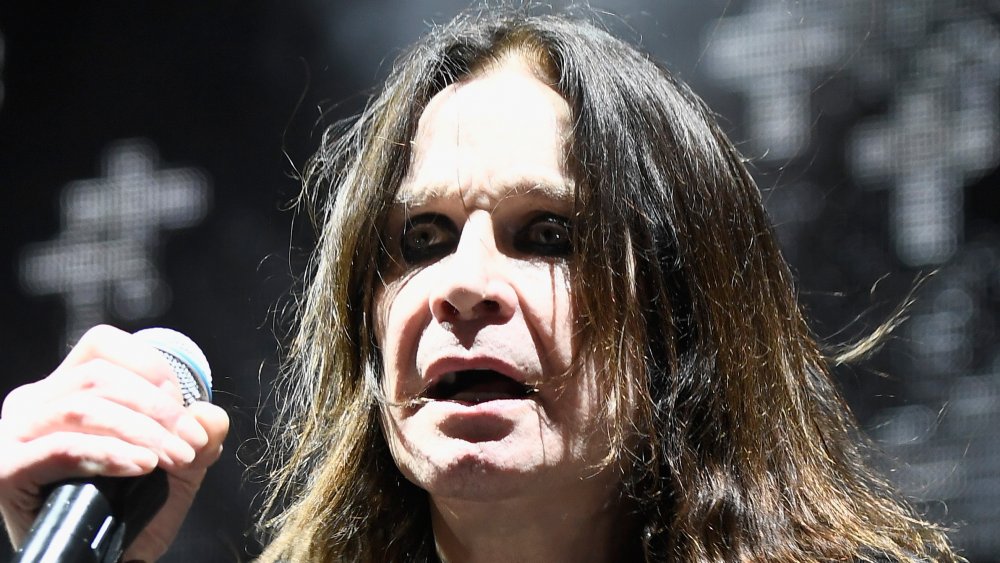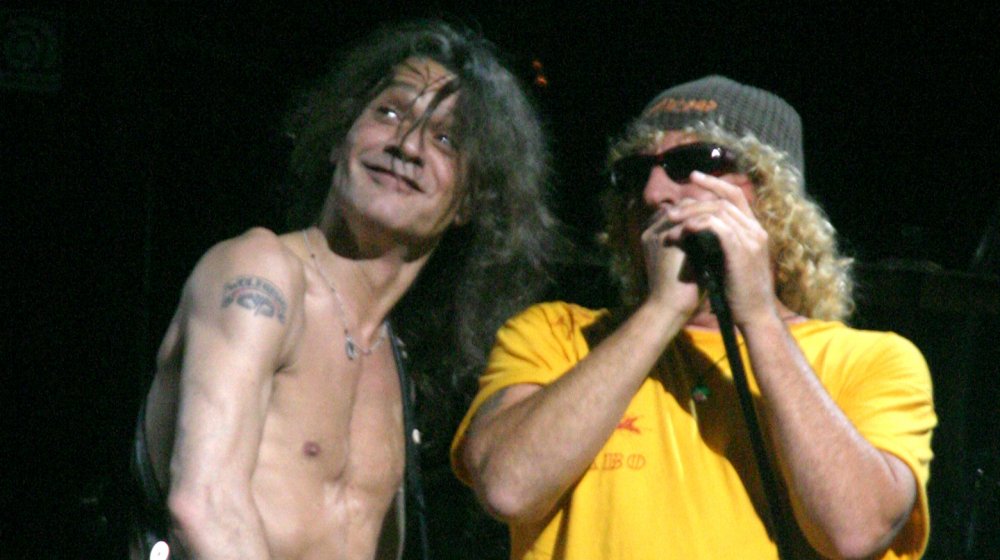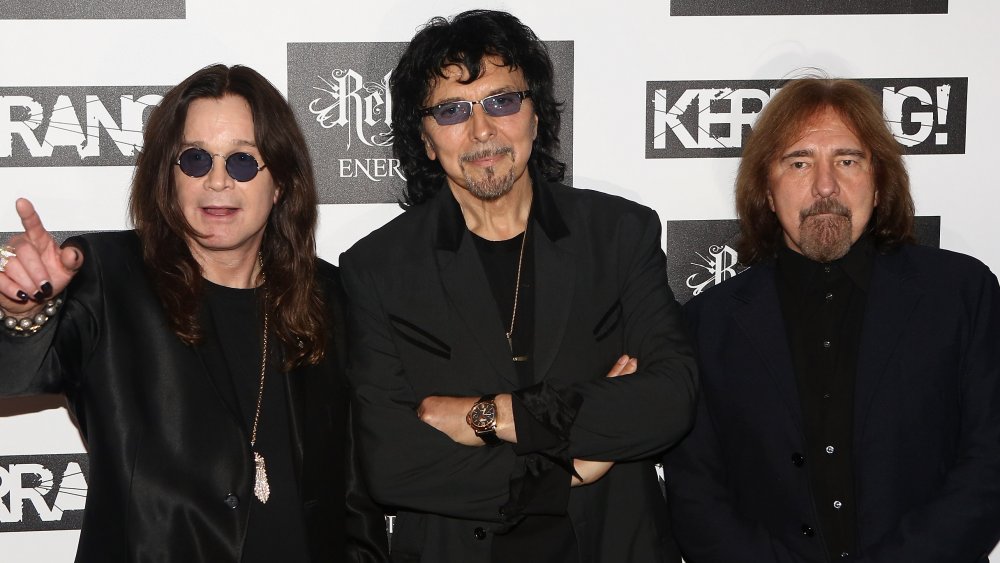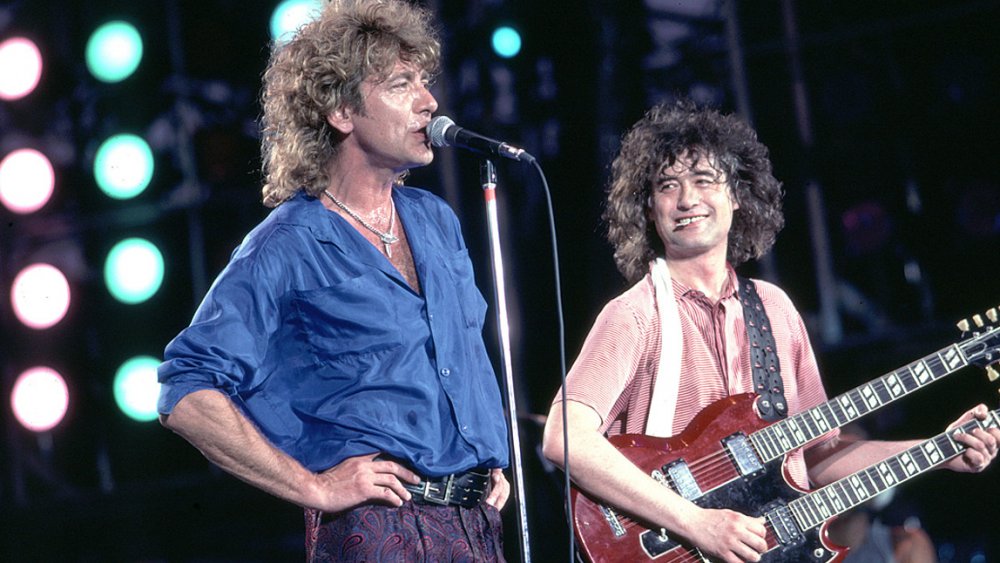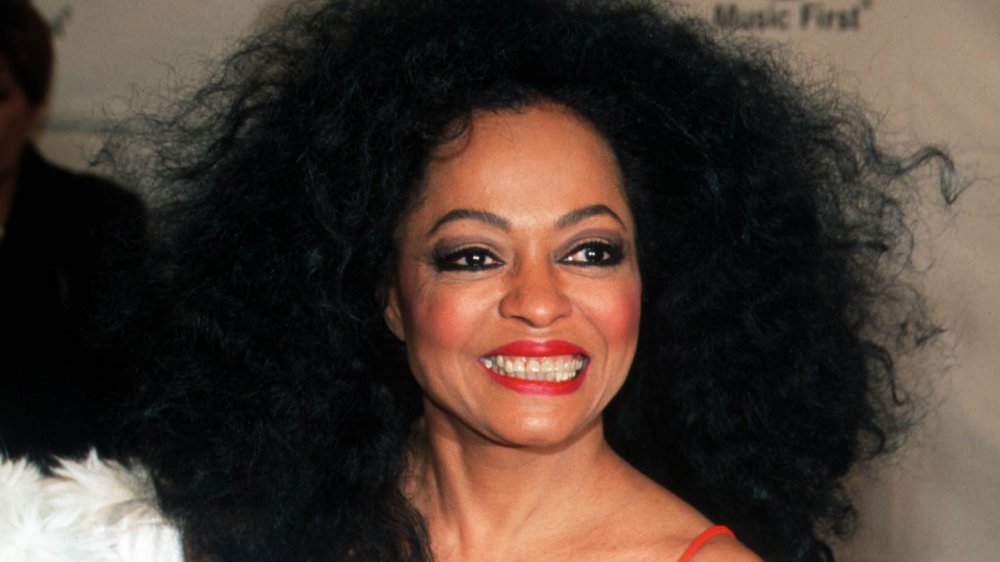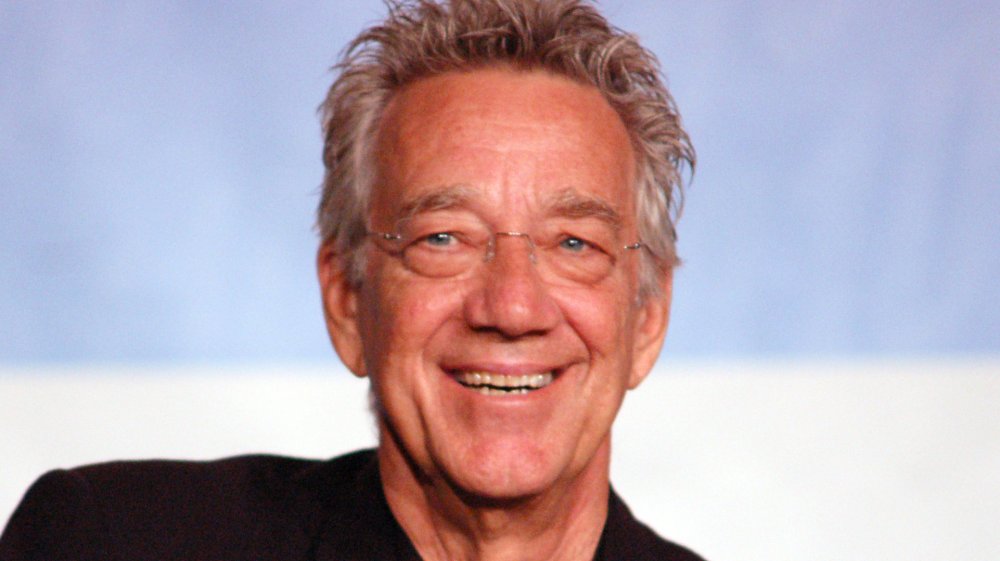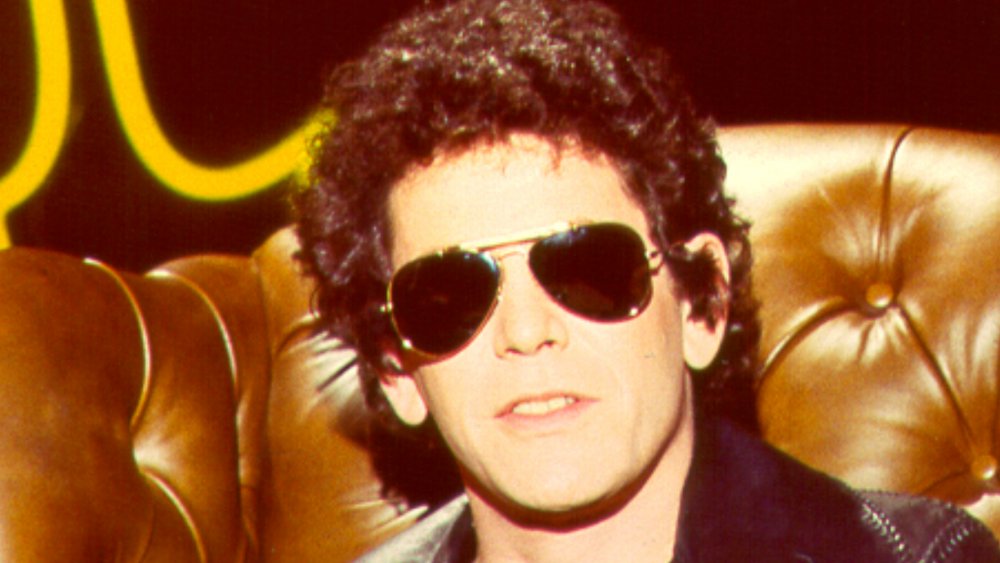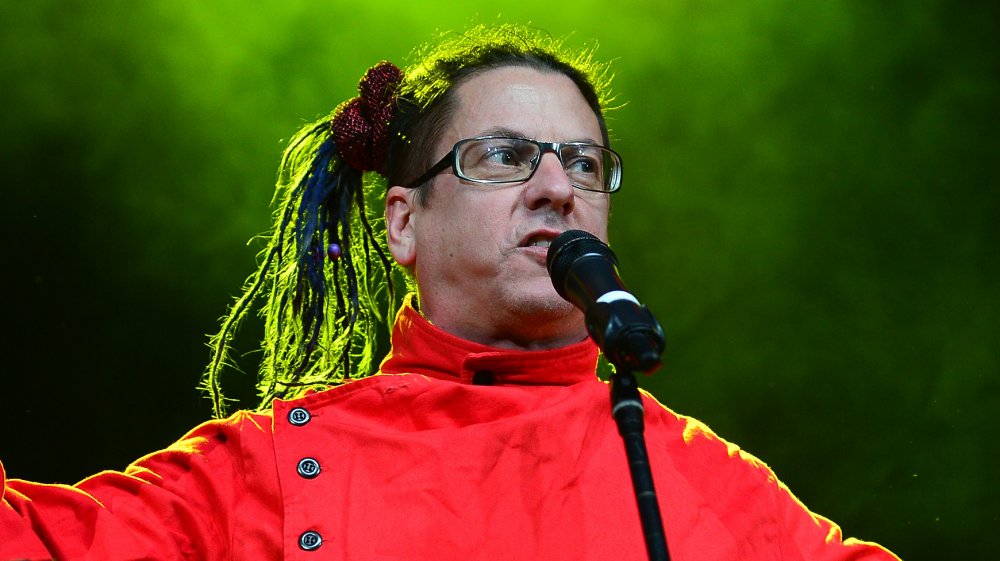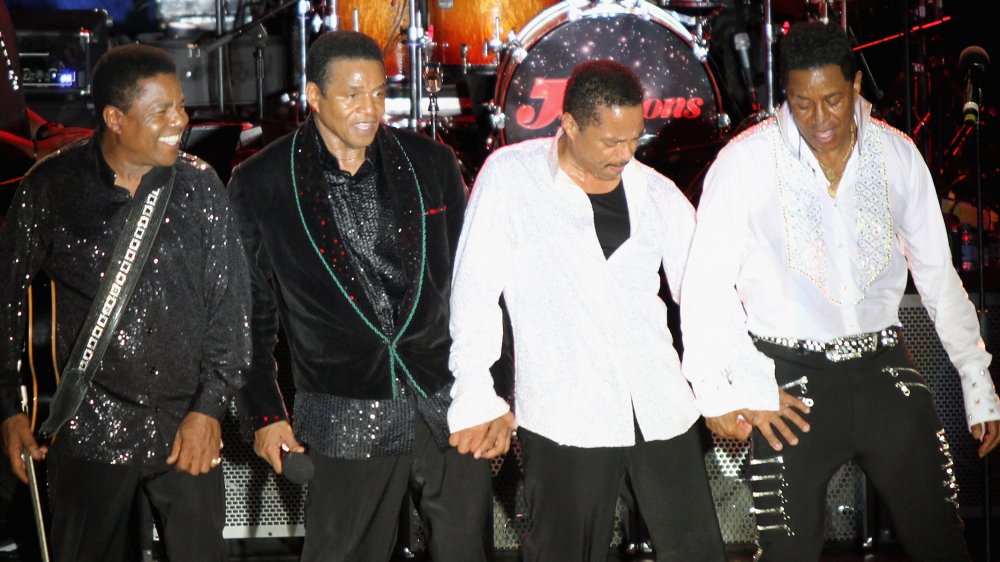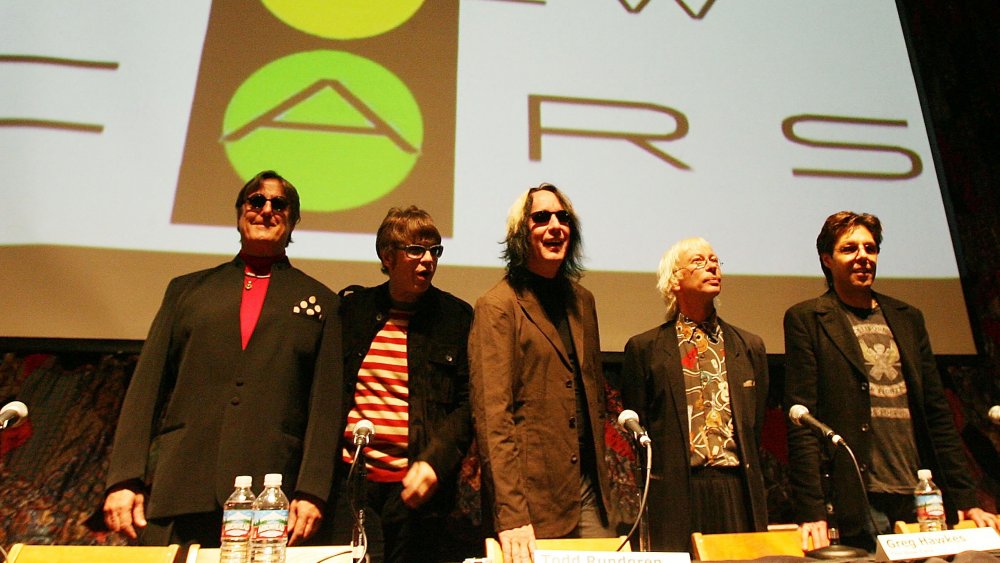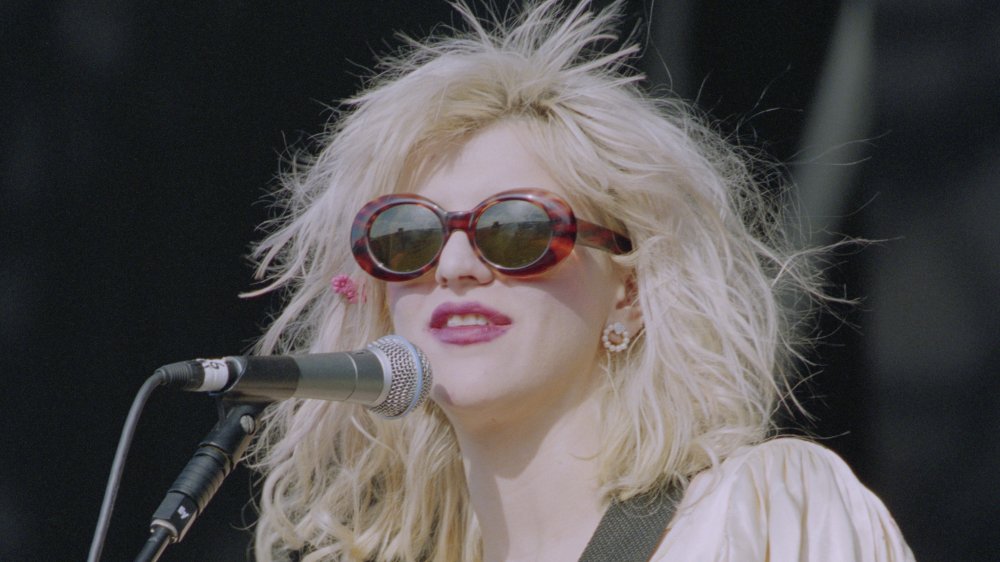The Most Disastrous Band Reunions In Music History
The rock 'n' roll story is often a trite one, with predictable bullet points throughout the tales of many of history's biggest bands. They form in a garage, get that big break, go on to huge fame and fortune, blow all the money on drugs, fight with each other over creative differences, and break up. The lead singer goes solo, and then, years later, the group reconciles just enough to remain civil for a massive reunion tour, during which they each take home $50 million.
Sometimes, those reunion tours (or one-off shows) are cordial and fun and show why the group was so special back in the day, and the band may even stay reunited and record and tour indefinitely. Other times, the members just can't overcome the reasons that tore the band apart in the first place, and the reunions fizzle out halfway through — or even before they can happen. These are the stories of those, the band reunions that were a terrible idea and which never should have happened.
Van Halen couldn't get out of its own way
When Sammy Hagar departed Van Halen in 1996, per AllMusic, the group brought back old singer David Lee Roth. Old tensions flared up, and they hired Extreme's Gary Cherone for one album, 1998's Van Halen III. The band stayed dormant for a half decade, until Hagar restarted his friendship with drummer Alex Van Halen and had a friendly jam session with guitarist Eddie Van Halen. Before long, Hagar had new songs for a greatest hits album, and Van Halen planned a reunion tour. Despite making things good with Hagar, the Van Halen brothers still took issue with bassist Michael Anthony staying friends with Hagar after he left the group, as detailed by Ultimate Classic Rock. Hagar said he wouldn't sing for the group without Anthony, who was strong-armed into a deal: He'd play with Van Halen at a reduced rate and give up his part of the rights to the Van Halen brand.
The dynamic between the Van Halens and Hagar subsequently fractured. The two camps rarely spoke to each other throughout the 2004 tour and even took separate transportation. Hagar became so tired of Eddie Van Halen's heavy drinking and backstage collapses that he tried to leave the tour after 40 shows ... but was stopped by the threat of a lawsuit. The whole thing ended in a messy concert in Tucson that November. Eddie Van Halen smashed his guitar, yelled, "You don't understand!" to the audience, and left. That was the last time Sammy Hagar sang for Van Halen.
Black Sabbath's dark chances
Black Sabbath helped invent heavy metal, giving the genre many of its distinguishing characteristics as well as its godfather in singer Ozzy Osbourne. By 1979, per the BBC, Osbourne was so unreliable due to his drinking that the band fired him. He went on to a successful solo career, and Sabbath hired a string of replacements, including Rainbow's Ronnie James Dio, with whom they recorded the 1980 album Heaven and Hell.
After a 1997 one-off show with all four members — Osbourne, guitarist Tony Iommi, bassist Geezer Butler, and drummer Bill Ward — Sabbath tried to reunite further, but the dark forces of the universe seemingly wouldn't allow it. The four started recording an album in 2001 and planned to hit the road, but all that was canceled when Osbourne had to leave to finish a solo record. The band did reunite in person, headlining Osbourne's Ozzfest in 2004 and 2005.
With Osbourne returning to his solo obligations, the remaining members reunited with their other iconic lead singer, Dio, and toured as Heaven and Hell, so as not to mislead fans into thinking it was an Ozzy-fronted configuration. Also, Osbourne sued Iommi, claiming that the latter had made illegal use of the "Black Sabbath" name. After the death of Dio and a settlement of the suit, the band announced plans to tour and record in 2012 ... which got delayed by Iommi's lymphoma diagnosis and Ward's refusal to participate until he got a better contract.
It had been a long time since Led Zeppelin rock and rolled
After dominating '70s rock with classics like "Immigrant Song," "Black Dog," and "Stairway to Heaven," Led Zeppelin split in 1980 after the alcohol-related death of drummer John Bonham. Just five years later, the band reunited for a good cause, playing a Live Aid famine relief concert with Phil Collins and Chic's Tony Thompson splitting drum duties. Led Zeppelin played a 20-minute set that consisted of just three songs: "Rock and Roll," "Whole Lotta Love," and "Stairway," of course. Allegedly, that's what the band played, because it's kind of hard to tell.
Robert Plant had lost his voice and couldn't hit the high notes (and some of the medium ones). "I was hoarse. I'd done three gigs on the trot before I got to Live Aid. We rehearsed in the afternoon, and by the time I got onstage, my voice was long gone," Plant told Rolling Stone. Meanwhile, Jimmy Page got stuck playing a woefully untuned guitar, and the stage monitors weren't working correctly.
Nevertheless, Plant, Page, and bassist John Paul Jones clearly had a great time playing together, and Plant reconvened the band for some secret, ill-fated jam sessions a few months later. "We did about two days," Plant said. But the Zeppelin magic was gone: "It was most embarrassing moment, to have all that will and not knowing what to play."
A supremely bad idea from the Supremes
Motown was the sound of the '60s, and the label's biggest act was the Supremes. By decade's end, the trio had topped the chart 12 times with songs like "Baby Love" and "I Hear a Symphony." All those hits and visibility made lead vocalist Diana Ross a household name, and in 1970, she struck out on her own to even more success, scoring hits for years on end, such as "Ain't No Mountain High Enough" and "Endless Love." The Supremes, meanwhile, soldiered on without Ross and with numerous personnel changes, and they eked out a few minor hits in the '70s.
In 2000, the Supremes announced their reformation and a tour. But calling themselves "The Supremes" was a technicality. The lineup wasn't the original, magical '60s one of Ross, Mary Wilson, and Florence Ballard. Ballard, fired and replaced by Cindy Birdsong in 1967, died in 1976. Birdsong didn't want to come back, and Wilson turned down the gig because she'd be paid $3 million – significantly less than the $15 to $20 million Ross had been guaranteed, per The Washington Post. And so, the Supremes hit the road, consisting of Ross alongside Lynda Laurence and Scherrie Payne, who'd joined the Supremes three years after Ross's departure. That wasn't much of a draw for fans, who didn't want to pay between $42 and $253. Some venues could only manage half-capacity — a venue in Columbus, Ohio, had 10,000 empty seats. Ultimately, promoter SFX canceled the tour midway through.
Not all of the Doors were open to a reunion
The Doors were built around Robbie Krieger's bluesy guitar and Ray Manzarek's psychedelic organ, but it was really "The Jim Morrison Show." The self-styled poet and "Lizard King" was a charismatic force of nature and a wild performer. Morrison died at age 27 in Paris in 1971, and the Doors kept going for a while without him. But the writing was on the wall — the Doors without Jim Morrison? — and the band ceased to exist in 1973. However, the individual members didn't stray far from each other. Krieger and drummer John Densmore played together in the Butts Band, and everyone played on Krieger's 1982 album Versions, for example.
A proper Doors reunion (without Morrison, of course) wouldn't really happen until 2003. Perhaps as a means to temper audience expectations, the group called itself the Doors of the 21st Century, per the Los Angeles Times. Manzarek and Krieger were in, but Densmore was not, and he filed an injunction to prevent the use of the Doors name. Instead, the band played under a few other Doors-suggesting names, including D21C, Riders on the Storm, and finally, Manzarek-Krieger, with the reasonably Morrison-like Ian Astbury of the Cult on vocals.
The Velvet Underground emerged for a hot minute
Art rock, punk rock, and alternative rock developed in the '70s and '80s, but the DNA of it all is in 1967's The Velvet Underground & Nico. Featuring vocalist Nico, Lou Reed's collective of edgy New York musicians known as the Velvet Underground played some moody, audacious, and haunting tunes. Although regarded as one of the best and most influential albums of all time, it never sold well, and neither did the Velvets' compelling follow-ups. Reed and multi-instrumentalist John Cale often clashed, and in 1968, after two albums, Cale left the group, replaced by Doug Yule. By the band's fifth and final album, Squeeze, in 1973, guitarist Sterling Morrison, drummer Maureen Tucker, and even Reed had also departed.
Andy Warhol had managed the group and made them the house band at his club The Factory. After Warhol's death in 1987, Reed and Cale put their differences aside to make a concept album about the artist called Songs for Drella. At a performance of the record, the entire Nico-era lineup reunited for an encore, as reported by Rolling Stone, playing the Velvets' well-known "Heroin." In 1992, the foursome officially reunited, and in 1993, they kicked off a European tour in Scotland, playing both as a headliner and opening some shows for U2. Talks were underway for an American leg, taping an episode of MTV Unplugged, and recording a new album, only for Reed and Cale to start bickering again. The new Velvet Underground split up after just a few weeks on the road, according to Dangerous Minds.
Not even VH1 could reform Information Society
In the mid-2000s, VH1 aired Bands Reunited. Host Aamer Haleem led a camera crew as it ambushed the members of long-defunct bands and persuaded them to put aside the personal and business issues that led to their splits in order to reunite for a single televised performance. Berlin, Dramarama, and Kajagoogoo all played ball, and, as the footage would indicate, so did Information Society, a synth pop band best known for its huge 1988 hit "What's on Your Mind (Pure Energy)." All the members sought out signaled their approval by singing a copy of the band's album, as was the Bands Reunited tradition, but when it came time for the reunion concert, singer and bandleader Kurt Harland wouldn't perform.
According to a lengthy explanation on his website, Harland said that the crew from the VH1 show talked and charmed their way into his office at video game company Crystal Dynamics. He claims that the show creatively edited the film to make it look like he'd reform Information Society, airing just him saying, "Yeah, whatever," and cutting the many questions he had about contracts and gauging the interest of his former bandmates. And even that tentative yes came from a cameraman cajoling him, Harland says. He also stated, "I'm not agreeing to anything today," which didn't make it into the finished episode. But then, VH1 didn't have a show called Bands Not Actually Reunited.
And now, the Jackson ... 4?
Combining bubblegum pop with Motown R&B, the Jackson 5 were easily one of the most successful and exciting acts of the '70s. The group consisted of five brothers: Tito, Marlon, Jermaine, Jackie, and breakout star Michael Jackson. Still just a tween, Jackson sang lead on #1 smashes like "I Want You Back," "ABC," "The Love You Save," and "I'll Be There." A solo career was a foregone conclusion. In 1972, the test balloon "Ben" topped the charts, and Michael Jackson left his brothers behind at the end of the '70s. Before long, he was the King of Pop thanks to the mega-success of the 1982 album Thriller.
In 2009, Jackson died of a heart attack related to voluminous drug abuse. As reported by ABC News, in 2012, the rest of the Jackson 5 got the family band back together ... without its biggest star. Tito, Marlon, Jermaine, and Jackie announced the not at all accurately named "Unity Tour 2012," the first time they'd all sing together since the Thriller-era "Victory Tour" of 1985. The tour wasn't exactly a summer blockbuster — the brothers played just 27 dates in small theaters, casinos, and wineries — not quite the stadiums Michael Jackson sold out on his own. Oddly, about one third of the average show consisted of covers of Michael Jackson's solo hits which the 60-something brothers had nothing to do with, including "Rock With You" and "Don't Stop 'Til You Get Enough."
The Cars crashed
One of the most successful and influential New Wave bands (and who enjoyed a mutually beneficial relationship with MTV), the Cars split up in 1988. Frontman Ric Ocasek pursued a career as a producer (for the likes of Weezer, Iggy Pop, and Nada Surf), while bassist and sometime singer Benjamin Orr tragically died of cancer in 2000.
Half a decade later, a manager for the other three Cars (Greg Hawkes, Elliot Easton, and David Robinson) approached Ocasek about a reunion, and he angrily rejected the idea. "The s- hit the fan," Ocasek later told Rolling Stone. "Lawyers got involved. It must have cost a ton of money in legal fees that I wasted, the Cars wasted, for f-ing no reason."
Instead, the old Cars (minus Robinson, who backed out) formed the New Cars and hit the road for a handful of dates in 2006 and 2007. Replacing the indelible Ocasek, Orr, and Robinson: hired guns, including Tubes drummer Prairie Prince and quirky rock legend Todd Rundgren. The tour was moderately successful but ended before it should have when Easton broke his collarbone in a tour bus accident.
There were some holes in the Hole reunion
Hole wasn't a major act for long, recording just two major-label albums in its '90s heyday – Live Through This and Celebrity Skin. However acclaimed and popular the music was, it was often overshadowed by the tumultuous personal life of bandleader Courtney Love, who had a tendency to wind up in courtrooms, rehab facilities, and gossip magazines with troubling regularity. Hole experienced a lot of turnover throughout its existence, but the most famous lineup consisted of Love, guitarist Eric Erlandson, bassist Melissa Auf Der Mar, and drummer Patty Schemel.
As reported by Spin, In the lead-up to the release of a solo album called Nobody's Daughter, Love told the world that she was getting Hole back together in 2009. It would seem that Love forgot to tell Auf Der Mar of her involvement, though. "My loyalty to the legacy of Hole is eternal," Auf Der Mar told Exclaim, adding that, "there is no reunion mapped out as of now." That reunion never did transpire, but in 2012, after the screening of Schemel's documentary Hit So Hard, the classic Hole lineup took the stage for a short set, per the Los Angeles Times.
